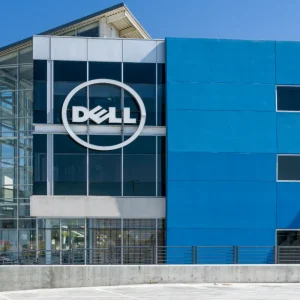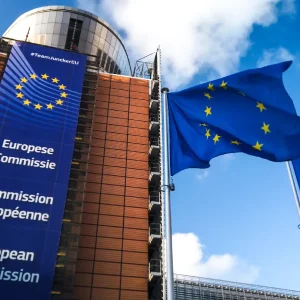
2023 has been a tumultuous year for the tech industry. Layoffs have mounted as inflation and increased interest rates collided in the post-pandemic era to create unfavourable conditions for employers, essentially ending the era of unbridled growth seen during the 2010s.

While job losses are a familiar sight for tech startups, many of whom go under in their first few years, mass layoffs have extended to many of the largest names in the industry, including Meta and Microsoft.
The start of the year saw the highest proportion of tech worker redundancies, with the global figure peaking at nearly 90,000 in January according to layoffs.fyi. There has even been evidence of job growth in some areas, but more redundancies can be expected into 2024 as economic conditions continue to struggle.
What are the main tech layoffs of 2023 so far?
Shortly after Elon Musk’s $44bn takeover of Twitter in October 2022, its new overlord cut the jobs of some 3,700 people, or roughly half the platform’s total workforce. The official reason was cost-cutting. With Twitter making a loss of over $4m per day, argued Musk, something had to give.
In February, the CEO laid off an additional 200 people from the firm’s remaining 2,000 employees. Critics have argued that the job cuts have compromised Twitter’s functionality and inadvertently led to a rise in hate speech on the platform. However, Musk has made it clear that he is actively recruiting for at least one role at the company – that of his replacement. Seemingly tired of running the troubled social media platform, the multi-billionaire said that he was happy to vacate the role of chief executive once he found someone "foolish enough to take the job".
In May 2023, Twitter reached the lowest number of employees, now around 1,000, according to Insider. The site also reports that today Twitter's headcount is down almost 90% from right before Musk took over when the company counted almost 8,000 employees. The year 2011 was the last time Twitter had such a low number of employees when it only counted 400 heads.
Salesforce
Salesforce had a good pandemic. Up to three million transactions were processed on the firm’s Commerce Cloud platform in 2020, more than double the previous year’s rate. Salesforce’s launch of Work.com, an advice and product service for businesses and educational establishments, and Vaccine Cloud, which helped public authorities and healthcare providers to speed up the inoculations operation, were also surprise hits.
Since then, challenges have mounted for Salesforce, with the company being forced to restructure its finances late last year. In January 2023, the company announced that almost 7,000 employees – almost 10% of its total workforce – would eventually be made redundant, alongside a concomitant reduction in office space. So far, 800 of that number have lost their jobs. It is believed that the redundancies, expected to continue up until 2024, will eventually cost the business around $2bn in severance pay, and $450-$650m in office space exit fees.
“I am confident about the huge opportunity in front of us thanks to the strength of our mission, the value of our products and services, and our early investment in AI,” announced Google’s chief executive Sundar Pichai in January, before sacking 6% of the workforce manning Alphabet, the search engine’s parent company.
Equating to almost 12,000 people, the layoffs were attributed to lower-than-expected advertising revenues in the third quarter of 2022. "Once again, YouTube growth slowed to a crawl amid tough competition from TikTok and other players in the video-streaming space," wrote Jesse Cohen, a senior analyst at Investing.com. "Alphabet is being negatively impacted by worsening macroeconomic headwinds, such as soaring inflation and worries about a possible recession." Investor confidence may also have been rocked by the success of Google's rivals, Microsoft and OpenAI, in surpassing the search giant’s reputation for excellence in artificial intelligence research and application, thanks in large part to the phenomenal level of interest generated by ChatGPT.
Dell
Dell’s revenue beat all expectations in the annual report of October 2022, with a 14% growth in revenue year-on-year. However, the last quarter of 2022 signalled a 37% drop in shipments, making Dell the most prominent victim of a worldwide dip in computer sales.
According to Dell’s chief operating officer, Jeff Clarke, cost-cutting alone would not balance the firm's books. The company’s prospects were further diminished by poor investments in the semiconductor sector and the drop in computer shipment numbers. Consequently, around 6,500 people working at Dell, or roughly 5% of its overall workforce, are now at risk of redundancy.
Meta
In November 2022, Mark Zuckerberg's Meta announced a round of significant layoffs, accounting for 13% of its total workforce. Even though these layoffs were expected, considering the climate surrounding the tech world, it was still a large headcount to let go. Then, the overall workforce at Meta included around 87,000, which means that 11,000 workers would have had to leave the company. Zuckerberg took full responsibility, "I know this is tough for everyone, and I'm especially sorry for those impacted," he said in a statement.
Every employee based in the US received 16 weeks of severance pay as well as two weeks extra for each year at the company. In addition, workers that have been let go were also paid for all the unaccounted time off and received a percentage of stock-based compensation, alongside an extension of six months on their private health insurance, extending it to the families too.
However, another 10,000 workers lost their jobs between March 2023 and April 2023, Meta confirmed. This process impacts "low-priority projects" in the name of Zuckerberg's "year of efficiency". Some examples are Reality Labs, Meta's version of the metaverse, and minor developments within the Facebook application. With this new round of layoffs, Meta has lost roughly one-quarter of its workforce.
Spotify
January 2023 also saw streaming platform Spotify laying off 6% of its workforce, which is around 600 employees globally. Daniel Ek, the CEO, stated that "While I believe this decision is right for Spotify, I understand that with our historic focus on growth, many of you will view this as a shift in our culture. But as we evolve and grow as a business, so must our way of working while still staying true to our core values."
The cuts in Spotify's headcount followed a 26% year-on-year increase in employees in 2022 in comparison with 2021 and happened in order for the company to "evolve" as Paul Vogel, CFO of Spotify, explained. "Reporting lines are more streamlined, the accountability is there. The ability to get things done with fewer people is there. And when you become a business that's as big as we've become, you sometimes have to make changes," Vogel continued.
Amazon
Despite its dominant position in the retail market, Amazon has not proven immune to layoff fever. Up to 18,000 jobs are expected to be eliminated at the firm, chief executive Andy Jassy explained in January, with most of the cuts falling on its e-commerce and human resources departments. An additional 9,000 redundancies were announced in March, mostly impacting the gaming and advertising departments of its public cloud division, AWS.
“Amazon has weathered uncertain and difficult economies in the past, and we will continue to do so,” said Jassy, in a statement. “These changes will help us pursue our long-term opportunities with a stronger cost structure.”
Jassy portrayed the cuts as almost a return to normalcy for Amazon, in that the total number of staff made redundant was roughly equivalent to the additional workforce it hired during the pandemic to cope with increased demands for its products and services. Now, however, “given the uncertain economy in which we reside and the uncertainty that exists in the near future,” he said, “we have chosen to be more streamlined in our costs and headcount.”
In addition to the layoffs, the company also communicated that it would end the donation project AmazonSmile in February 2023, which was aimed to redirect 0.5% of the cost of certain products to selected charities. The company stated: "After almost a decade, the program has not grown to create the impact that we had originally hoped. With so many eligible organisations – more than one million globally – our ability to have an impact was often spread too thin."
Microsoft
Microsoft seemed to have made a canny bet on OpenAI after the latter’s generative AI service, ChatGPT, astonished the world. Yet, the Washington-based software giant has decided to cut thousands of staff this year, too. “We are making changes that will result in the reduction of our overall workforce by 10,000 jobs through the end of FY23 Q3,” CEO Satya Nadella said in a statement in January.
The need to cut so many staff have been variously attributed to over-hiring during the pandemic, a dip in demand thanks to a global economic slowdown, and the impact of rising inflation on the company’s supply chains. It is anticipated that Microsoft will have to pay out around $1.2bn in redundancy payments, as well as for internal changes to the hardware portfolio and lease consolidations.
At the end of March 2023, the company communicated that more layoffs would be happening, especially impacting its Bellevue and Redmond operations, two research labs in the Seattle area. Specifically, 559 workers lost their jobs, bringing up the total of Seattle-based layoffs to 2,743, over a quarter of the total 10,000 job cuts.
IBM
Dropbox
April saw even the cloud storage giant Dropbox announcing a mass layoff, affecting 16% of its total workforce, equivalent to 500 employees. This is because "the AI era of computing has finally arrived", as CEO Drew Houston explained.
The last round of layoffs at the company happened in 2021, at the height of the COVID-19 pandemic, when over 300 people lost their jobs.
"While our business is profitable, our growth has been slowing. Part of this is due to the natural maturation of our existing businesses, but more recently, headwinds from the economic downturn have put pressure on our customers and, in turn, on our business. As a result, some investments that used to deliver positive returns are no longer suitable," Houston said.
He added: "Second, and more consequentially, the AI era of computing has finally arrived. We've believed for many years that AI will give us new superpowers and completely transform knowledge work. And we've been building towards this future for a long time, as this year's product pipeline will demonstrate."
PayPal
In order to adapt to the "challenging macroeconomic environment", PayPal announced that it would lay off around 2,000 workers in January 2023, which is 7% of the total workforce. CEO Dan Schulman wrote in a statement: "While we have made substantial progress in right-sizing our cost structure, and focused our resources on our core strategic priorities, we have more work to do. We must change as our world, our customers, and our competitive landscape evolve."
This round of layoffs was not the first for the publicly traded company since, in 2022, it had already laid off almost 90 employees from its San Jose headquarters.
In February, social media company Pinterest announced its second round of layoffs. According to Bloomberg, 150 employees were let go, representing around 5% of the total workforce. A spokesperson told TheWrap: "We're making organisational changes to further set us up to deliver against our company priorities and our long-term strategy. All of the employees who were impacted contributed to Pinterest and as they transition, we're committed to supporting them with separation packages, benefits, and other services."
This announcement followed a previous one in November 2022, when the company communicated that an unspecified number of employees would be fired.
Zoom
Due to the unprecedented need for virtual calls during the pandemic, Zoom's workforce grew three times over in 24 months, as the company experienced five straight quarters of triple-digit year-on-year growth. Since then, the demand has slowed down, even if its revenue has not dipped, and Zoom's CEO Eric Yuan had to make the tough choice of laying off 15% of its staff, which corresponds to 1,300 people.
In November of 2022, Zoom reported that its revenue had increased 5% year-on-year to $1.1bn, but online revenue dropped by 9%. On a more positive note, enterprise revenue did increase by 20%, reaching $614.3m.
In a blog post, Yuan explained: "The uncertainty of the global economy, and its effect on our customers, means we need to take a hard – yet important – look inward to reset ourselves so we can weather the economic environment."
Yahoo
Yahoo also fell victim to the ruthless tech world layoffs. In February, the company announced that it would let go of 20% of its total workforce, corresponding to 1,600 employees mainly working in its ad tech business. The total 20% was impacted on two separate occasions, since 12% of the company, around 1,000 people, was axed with immediate effect, while the remaining 8% would be let go over a period of six months.
Yahoo's CEO Jim Lanzone confirmed that, contrary to most of the other tech layoffs, his company's decision does not stem from economic difficulties. Instead, they are conscious and intentional changes to render the Yahoo for Business advertising unit stronger and more stable. Yahoo is indeed still very profitable, registering around $8bn a year in revenue.
A spokesperson told TechCrunch: "Over several years, the strategy of our ads business was to compete in the ad tech industry by offering a 'unified stack' consisting of our Demand Side Platform (DSP), Supply Side Platform (SSP) and Native platforms. Despite many years of effort and investment, this strategy was not profitable and struggled to live up to our high standards across the entire stack."
Twitch
Amazon's plan to lay off 9,000 people also impacted the gaming and streaming platform Twitch. Around 400 employees were axed from the company in March, with the objective of bettering the site's business strategy.
Dan Clancy, Twitch CEO, wrote: "Like many companies, our business has been impacted by the current macroeconomic environment, and user and revenue growth has not kept pace with our expectations. In order to run our business sustainably, we've made the very difficult decision to shrink the size of our workforce."
There is a concern that Twitch's decision to lay off hundreds of employees could lead to a decline in safety for viewers. Bloomberg reports that "Twitch's layoffs cut back moderation and responsible AI teams, which sources say could impact safety on the site. Twitch plans to outsource more. Lots of tech companies cut moderation during layoffs, but Twitch has unique safety challenges." These layoffs impacted 15% of the workforce responsible for the safety and monitoring of viewers and AI, but it is still not completely clear how this will change the platform.
Indeed
The job-searching platform Indeed communicated in March its plan to lay off 2,200 employees, which is 15% of the total headcount. According to CEO Chris Hyams, the company was driven to this decision since the last quarter's sponsored jobs went down 33% year-on-year, while overall job openings declined by 3.5% since 2021. This was a big hit for the financial side of the company since most of its revenue derives from allowing companies to sponsor job listings.
The repercussions also impacted Hyams himself, who took a 25% salary cut. Whoever was hit by these layoffs received at least 16 weeks of base pay salary, compensation for unused holidays, mental health services and an extra cash payout. In his announcement, the CEO stated that every department in the company would suffer losses.
"With future job openings at or below pre-pandemic levels, our organisation is simply too big for what lies ahead. We have held out longer than many other companies, but the revenue trends are undeniable. So I have decided to act now," Hyams wrote.
Netflix
With Netflix's restructuring projects also came numerous layoffs. In order to simplify the company's strategies, the popular streaming platform announced in March that an unspecified number of workers would lose their position. Two of the longest-serving executives, Ian Bricke and Lisa Nishimura, who worked on titles like Tiger King and The Kissing Booth, also had to leave.
Netflix previously announced that a little under 500 jobs would be cut between May and September 2022, mostly from its animation department. "While we continue to invest significantly in the business, we made these adjustments so that our costs are growing in line with our slower revenue growth. We are so grateful for everything they have done for Netflix and are working hard to support them through this difficult transition," a spokesperson said.
SAP and IBM
January also saw IBM announce plans to make 3,900 of its employees redundant. These cuts, analysts observed, were related to the sale of its subsidiary Kyndryl and missing certain financial targets over the previous year. IBM shares dropped by 2% when the news broke which, some market analysts speculated, may have been because previous cost-saving measures at the digital technology giant were not as drastic as those of its nearest competitors.
A few hours after IBM’s announcement, its partner and joint stakeholder SAP shared its plan to sack 3,000 of its staff. In addition, the German software provider will likely sell its stake in experience management platform Qualtrics thanks, in part, to cost considerations arising from high inflation. More than 120,000 people work at SAP, meaning that the expected job cuts will see a drop of about 2.5% of its staff. However, the overall workforce is still bigger than it was during the pandemic, meaning that the company can save up to €350m per year starting in 2024 compared to 2020.
In May, IBM's CEO Arvind Krishna also stated that he believes that at least 30% of administrative jobs at the company, corresponding to 7,800 employees, could be replaced with AI over a five-year period, but there hasn't been an official statement to confirm this will actually happen.
Atlassian
Software developer Atlassian chose to cull 500 people from its workforce at the beginning of March 2023. All the staff that were made redundant left the company with 15 weeks’ pay alongside one extra week for every year they worked at the company.
"A month back we reorganised our company to better reflect operating in a changing and difficult macroeconomic environment," wrote company co-founders Mike Cannon-Brookes and Scott Farquhar in a commiserative statement. "We made tough calls to prioritise the most critical work for our current and future customers. While it helped us streamline work, we need to go further in rebalancing the skills we require to run faster at our company priorities."
Vodafone
In order to "simplify" its business model Vodafone has announced that it will soon make over 11,000 redundancies. The new CEO motivated this decision by explaining that in the next 12 months, the cash at Vodafone's disposal will drop by $1.6bn.
The phone operator's 2023 revenue is up 0.3% compared to 2022, however, CEO Margherita Della Valle stated: "Our performance has not been good enough. To consistently deliver, Vodafone must change. My priorities are customers, simplicity and growth. We will simplify our organisation, cutting out complexity to regain our competitiveness.
"We will reallocate resources to deliver the quality service our customers expect and drive further growth from the unique position of Vodafone Business."
Popular career-driven application LinkedIn is laying off 716 workers alongside phasing out its local jobs app in China, called InCareer because of "fierce competition and a challenging macroeconomic climate," as CEO Ryan Roslansky explained.
These changes are part of LinkedIn's Global Business Organization (GBO) and China strategy, which also sees the Business Productivity team being let go in order to "serve emerging and growth markets more effectively".
"We're adapting as we have done this year and will continue to operate with the ambition we need to deliver on our vision and the pragmatism required to run the business well," Roslansky said.
On a more positive note, LinkedIn's revenue went up by 8% year-on-year, which exceeded Microsoft's expectations.
Shopify
In May 2023, Shopify shared its plans to lay off 20% of its workforce, equating to around 2,300 people. In addition, it is also selling its logistics business Flexport for 13% in stock. This is almost a year after the company announced it would be reducing its numbers by 10%, around 1,000 workers.
CEO Tobias Lütke said: "We are heading into a decade of high velocity and massive change. We will require speed, agility, and a great deal of innovation. Technological progress always arcs towards simplicity, and entrepreneurs succeed more when we simplify. But now we are at the dawn of the AI era and the new capabilities that are unlocked by that are unprecedented."
The workers impacted by these decisions will receive a minimum of 16 weeks of severance pay, as well as an additional week for every year at the company.
BT
Telecommunications company BT has also joined the club by announcing that 55,000 of its staff will lose their job by 2030 and up to a fifth of them will be replaced by AI. The company shared this news with its annual financial results, which showed a 12% drop in profits, to £1.7bn. Today, BT employs 130,000 people, which means that up to 90,000 are going to be laid off.
The CEO Philip Jansen stated: "By continuing to build and connect like fury, digitise the way we work and simplify our structure, by the end of the 2020s BT Group will rely on a much smaller workforce and a significantly reduced cost base. New BT Group will be a leaner business with a brighter future."
When it comes to substituting real people with AI, Jansen added: "For a company like BT there is a huge opportunity to use AI to be more efficient. There is a 10,000 reduction [in staff] from that sort of automated digitisation, we will be a huge beneficiary of AI. I believe generative AI is a huge leap forward, yes we have to be careful, but it is a massive change."
Virgin Media O2
On 25 July, the British mobile operator Virgin Media O2 shared that it would be laying off 2,000 employees by the end of the year. "As we continue to integrate and transform as a company, we are currently consulting on proposals to simplify our operating model to better deliver for customers, which will see a reduction in some roles this year," a company spokesperson said.
The affected workers had already been warned, and they occupy 10% of the company. Tracey Fussey, assistant of the Communications Workers Union, expressed her worries: "This news is causing a tremendous deal of anxiety among our membership, who are now feeling vulnerable about their jobs during a historic economic crisis.
"The confirmation of job losses is a tremendous disappointment, and we will be doing everything we can to mitigate against the redundancies. The announcement of 2,000 redundancies includes changes already made this year."
Qualcomm
Qualcomm, one of the biggest semiconductor companies in the world, also announced the laying off of 415 people from their San Diego headquarters. This number translates into 5% of its total workforce, and it belongs to the highest-paying jobs. According to the company, this decision is attributed to the decrease in sales (17%) from 2022. In addition, in the first quarter of 2023, Qualcomms' net income went down by 42%.
"This will be a hit, but it's not going to be a large hit. You hate to see people lose their jobs, but again, in terms of the overall economy, this one situation is not going to have a big impact," economics professor at the University of San Diego Alan Gin told KPBS.
In June, social media platform Reddit shared the news of a set of layoffs affecting 5% of its total workforce, corresponding to 90 employees.
The update was shared by the CEO Steve Huffman, who also communicated that the company would be hiring only 100 people until the end of the year rather than the planned 300.
He wrote: "We've had a solid first half of the year, and this restructuring will position us to carry that momentum into the second half and beyond."






